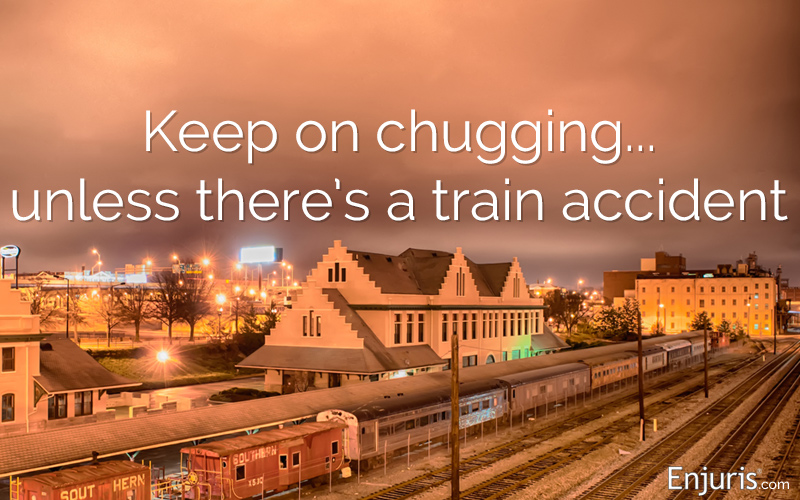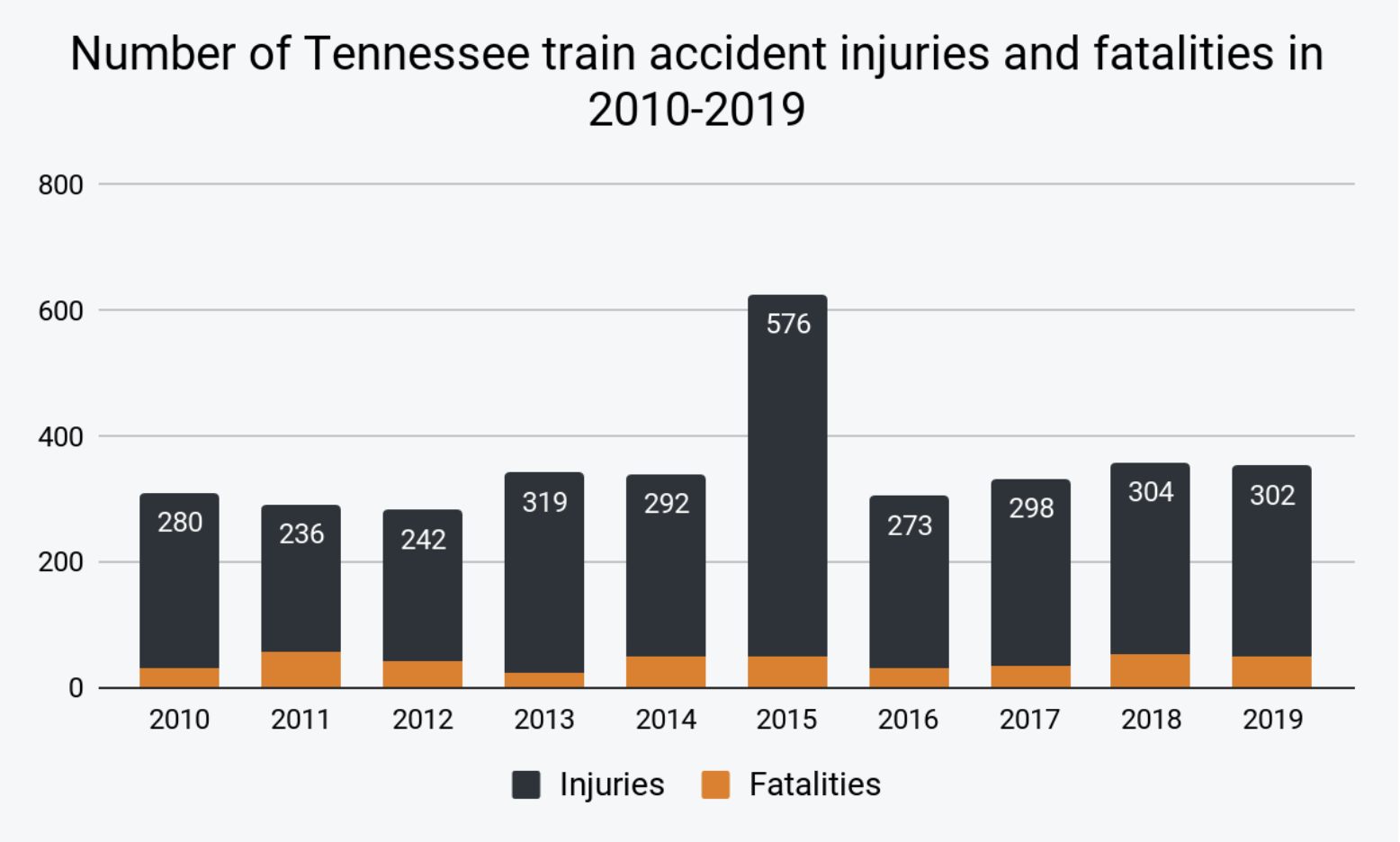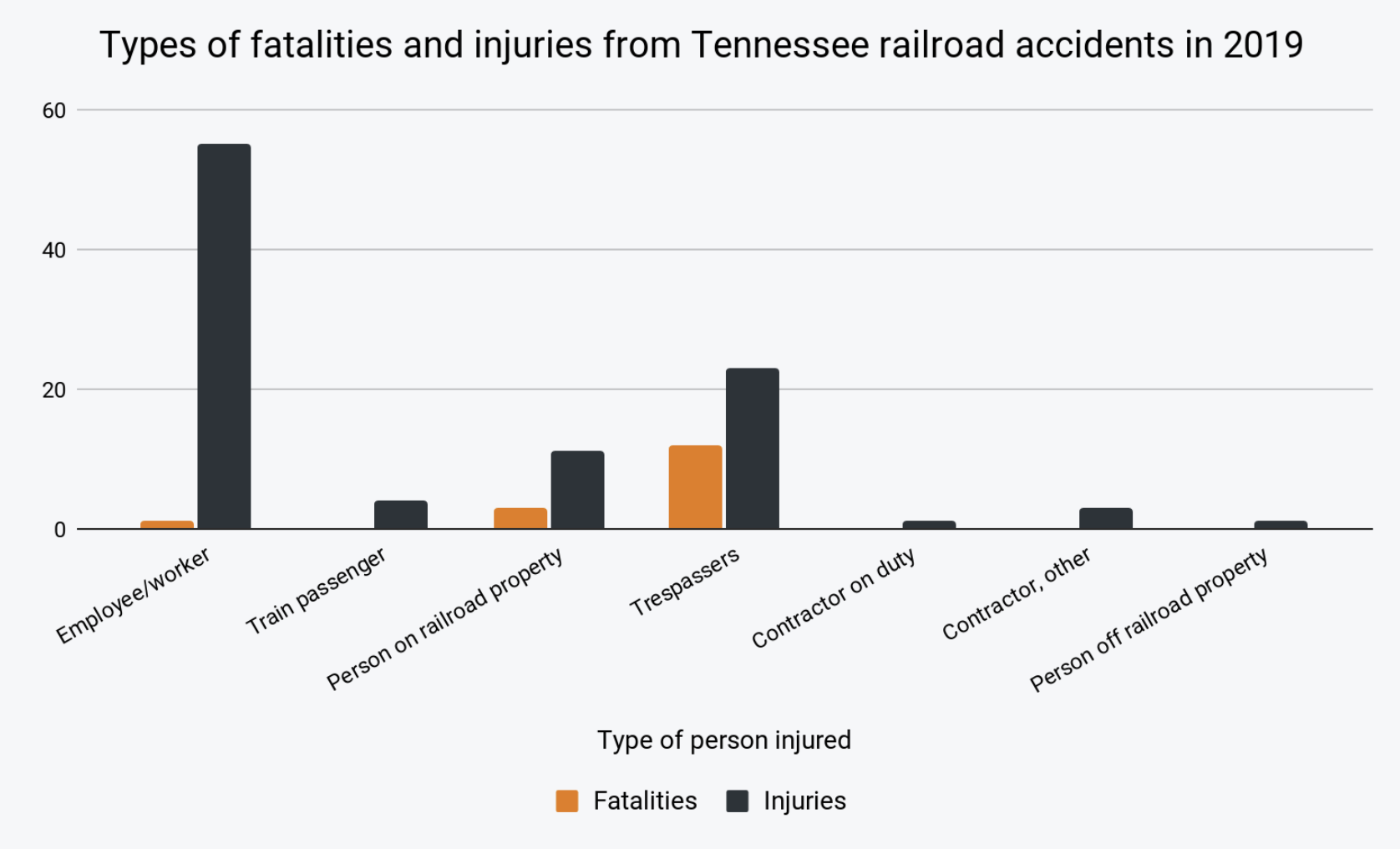
There could be several liable parties in a train accident lawsuit. Here’s how to know who’s at fault.
It’s safe to say that you weren’t alive when one of the most devastating train crashes in U.S. history happened in Nashville, but you might have heard about it. Country music artist David Allan Coe even wrote a song about it—“The Great Nashville Railroad Disaster,” which was included on his album in 1980.
The Great Train Wreck of 1918 resulted in the deaths of 101 people (though some reports said the number was 121) and 171 people injured. The No. 4 train, operated by the Nashville, Chattanooga, and St. Louis Railway (NC&StL), departed Nashville for Memphis around 7 am on the morning of July 9th. The No. 1 train was running about 30 minutes late for its scheduled arrival in Nashville from Memphis at 7:10 am.
The trains collided head-on in an area that’s known today as Belle Meade. Each train was traveling around 50 to 60 miles per hour and many of their wooden cars were destroyed on impact. The cause was determined to be errors made by operators of the No. 4 train and the tower operators, who apparently didn’t account for the other train on the tracks. Following the wreck, most railroad lines began to switch to passenger cars made of all steel.
Today, a train accident with more than 100 fatalities is much less likely because of improved technology, safer trains, and modern systems for travel logistics. That’s why the 1918 wreck is still the deadliest train accident in American history more than a century later.
Train accident statistics
Take a look at these figures from the Federal Railroad Administration:

You can see that there are far fewer fatalities than injuries. The second interesting part of these data is that the figures represent any reported injury related to the railroad.
The figures below more closely represent how and why people were injured — and it’s clear that the vast majority of railroad injuries are not related to crashes and don’t affect passengers.

The highest reported numbers were for injuries to railroad workers and trespassers, followed by fatalities to trespassers. Trespassers are people who were on the railroad tracks when and where they didn’t belong.
Types and causes of railroad accidents
There are 4 main types of train crashes and train-related accidents:
- Pedestrian hit by a train. The majority of train-related fatalities involve a person being killed as they walk along or cross a train track in the path of an oncoming train.
- Train crashes with cars. It’s never a good idea for a driver to try to “beat” a train across the tracks. Crashes happen when drivers underestimate the speed of an oncoming train (even when signals are flashing) or if a driver is stopped on the tracks while waiting for a traffic light to change or in a line of traffic.
- Train collisions. Trains that collide with each other are rare, but when it does happen it can have catastrophic consequences because of the sheer speed and size of each locomotive.
- Derailments. A derailment happens when a train comes off the tracks. When one train car pulls others off the track, it could affect the entire train. A derailment could harm railroad workers, passengers, and even occupants of nearby buildings or pedestrians.
The most common causes of train accidents include:
- Human error
- Equipment failure or defects
- Heavy or shifting cargo loads
- Signal or crossing failure
- Track failure
- Obstacles on train tracks
Train accidents with cars
You’re probably more likely to be involved in a train accident because of a negligent car driver than because of a derailment or other incident where only the train is involved.
Railroad crossing accidents
Here are 5 of the most common causes of train accidents and injuries at railroad crossings :
- Poorly marked or unmarked crossings
- Poor maintenance of railway crossings (like broken lights and overgrown vegetation)
- Speeding or driving too slowly (by either the train or the car)
- Negligence by the train engineer or operator
- Improper track or equipment maintenance
Preventing or avoiding a train crossing accident
Whether you’re a driver or a pedestrian, it’s important that you’re always aware of where a railroad crossing is and how to avoid an accident.
Here are 5 tips for avoiding a train accident as a driver or pedestrian:
1. Stay clear of a moving train.
The majority of trains carry cargo or freight that might include toxic chemicals or flammable gases or fluids. Even if there isn’t a large collision, there’s always a possibility of a chemical leak. Even if you’re certain that you’re far enough away from the train to be physically hit, it’s important to keep your distance in order to stay safe from exposure to toxic substances in the event of a leak.
2. Railroad tracks aren’t for recreation.
It might be tempting to walk, bike, jog, walk your dog, ride a motorcycle, take photographs or engage in other activities near train tracks because, for the most part, there aren’t other people around. But avoid this area.
If you are in the vicinity of a train track, remove your earbuds or headphones. A train can be loud, but when coupled with other ambient noise you can miss hearing it, especially if you’re listening to something else and distracted. Many railroad fatalities happen because of people using train tracks for these reasons and they don’t see or hear the train approaching.
3. Never try to “beat” a moving train.
Consider the size and weight of a train as opposed to your car. There’s no question that the train would fare better in a collision than a passenger car or truck.
Next, think about the amount of time it takes your car to stop. The typical car traveling at 55 miles per hour would require about 300 feet to come to a full stop. A train, on the other hand, takes far more time and a longer distance to stop, in part because the engine has hundreds of thousands of additional pounds behind it. By the time the conductor sees a car or person on the train tracks, it’s likely already too late to stop a moving train before a collision.
4. Don’t rely on how far away you think the train is.
Visual distance indicators might be misleading. A locomotive is a streamlined object, which means it gives the appearance of being farther down the track than it actually is. If you see or hear a train, stay away from the tracks until it has passed, even if you believe it’s far enough away that you could cross in time.
5. Don’t assume you know the train schedule.
Maybe your home is near the train tracks and you hear the whistle reliably each day at 3 pm. Or perhaps you routinely cross the tracks as you head to work and you’re certain you know when to expect the train. While the train schedule might be fairly regular, there are a variety of reasons why it might change — weather, loading issues, personnel changes, etc. Always be cautious and check for a train approaching, even if you don’t think it’s the right time.
Who is responsible for a train accident?
A “common carrier” is a transportation company that carries people or property from one location to another. Common carriers have a duty to keep passengers safe.
You might be familiar with Tennessee’s passenger lines such as the Music City Star commuter rail service that runs from Nashville to Lebanon, and Amtrak, which is a national train operator for long-distance travel.
But there are also dozens of commercial freight carriers that are either based in Tennessee or travel the railway through the state.
A train operator is either a private company or a public (government-run) agency. Every train operator, regardless of legal status, must follow strict state and federal safety regulations.
Some regulations include limits on the number of hours a train operator may work without a break in order to allow for adequate sleep and to curb the risk of nodding off at the controls, along with other safety regulations. But not every operator follows the rules and fatigue can be a big problem.
Each railroad company is responsible for:
- Ensuring that the train and tracks are properly maintained.
- Ensuring that employees like conductors and engineers are properly trained and experienced to manage a train and its passengers.
If an accident happens, the investigation would focus on whether someone was negligent. “Negligence” would involve a person or entity that breached their duty of care, and that breach resulted in injuries.
Liability could be on the train operator if the accident was the result of negligence by one of its employees or system failure. But there are also other parties that could be liable, including:
- Track owner. Different sections of track could be owned by different private companies or government entities. Whoever owns or controls the section of track where the accident occurred could be liable if there were any deficiencies on the track that contributed to the accident.
- Car or truck driver. If the crash was because the train collided with a vehicle on the tracks, the driver of the car could be liable.
- Manufacturer. Equipment failure could include issues with the engine, signals, or any other part of the train or tracks. If there was faulty equipment on your train, another train, a signal, or elsewhere, then the manufacturer of the part or component could be liable for your injuries.
Injuries to railroad employees
Almost everyone in this country who’s employed by another person or company is covered for work-related injuries under workers’ compensation insurance. This coverage applies whether you work for a small business, a large company, or a government agency.
But there’s one exception: People who work for the railroad.
Railroad employees are protected by the Federal Employers Liability Act (FELA) instead of workers’ compensation.
If you’re a railroad employee who has been hurt on the job, you’ll need to file a lawsuit or claim under FELA. Unlike workers’ compensation, a FELA lawsuit requires the injured worker to show that the railroad company was negligent and that negligence caused their injury.
A railroad can be found liable for a worker’s injury if the railroad:
- Failed to provide proper safety training.
- Failed to provide adequate safety equipment.
- Required the worker to work longer hours than the regulations allow.
- Required the worker to perform under unreasonable time pressure.
- Failed to provide adequate employee supervision.
Claiming damages for a Tennessee train accident
If you’re involved in a train accident, there are 3 legal questions that you need to ask before pursuing a claim:
- Does my claim fall under FELA (i.e. am I an employee of the railroad)?
- Can I file a personal injury lawsuit?
- Is the claim a wrongful death action (I am claiming on behalf of a family member who died in a Tennessee train accident)?
You can claim damages if your injuries cost you money. If you were a passenger on a train that was involved in an accident and you weren’t injured, or if your injuries were minor like small bumps or bruises, you can’t make a claim if your injuries didn’t require treatment or cost money.
If you or a loved one were seriously injured, you can claim damages to recover costs for items that include:
- Medical expenses, including surgeries, hospital visits, doctor visits, medications, assistive devices, therapies, and any other item that costs money and is associated with your treatment.
- Pain and suffering, if the accident left you with emotional issues like anxiety, insomnia, post-traumatic stress disorder, or other illnesses. Pain and suffering damages can also compensate accident victims for limb amputation, disfigurement, burns, and other permanent disabilities suffered from the accident.
- Lost wages and future earnings can be claimed if the injury caused you to take time off from work, or if you’re no longer able to work in the same capacity as you did prior to the accident.
- Property damage is also included in personal injury damages. If any of your property was lost or damaged, you can claim the amount required for repair or replacement.
- Punitive damages are awarded in cases where the defendant’s behavior was particularly malicious or egregious.
Because of the complicated legal situation around federal and state regulations, potential liable parties, and other issues, it’s important to call a train accident lawyer immediately if you think you have a claim.
But beware of one thing:
Most train accidents are newsworthy because they’re so rare. Especially if it’s an accident that resulted in a high number of injuries or fatalities, you might have lawyers come to you to offer to take your claim after they’ve seen the accident on the news.
In Tennessee, it’s not only unethical but also illegal for a lawyer to reach out to you and ask to handle your case (with a few exceptions, such as if the lawyer is a family member or close personal friend, or if you’ve already engaged their services).
You might not be eager to search for an attorney as you’re recuperating from an injury, but doing so will help you to recover costs for your medical treatment, lost wages, and future related expenses.
These Enjuris resources can help you find a Tennessee lawyer who is experienced, empathic, and ready to handle your train accident lawsuit:
- How to Find a Personal Injury Lawyer
- Preparing to Meet With a Personal Injury Attorney
- Tennessee Law Firm Directory
See our guide Choosing a personal injury attorney.
